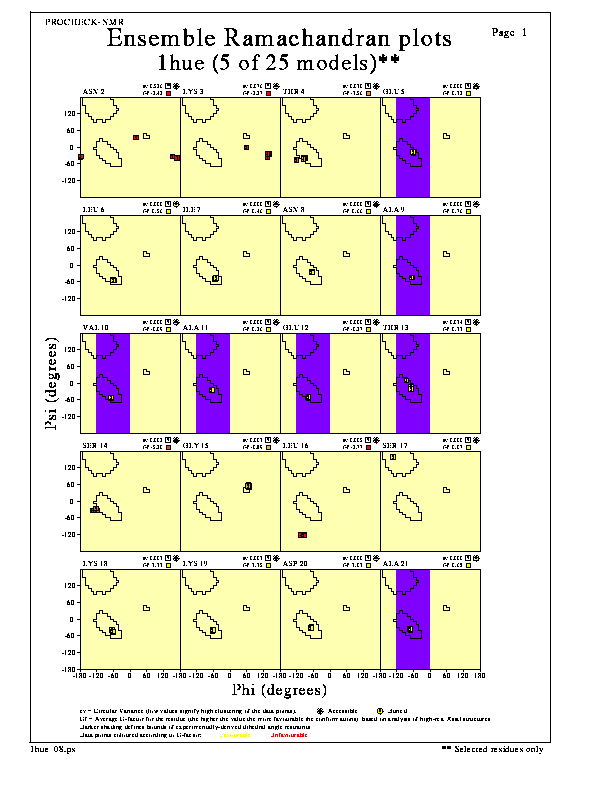




 PROCHECK-NMR - Sample plots
PROCHECK-NMR - Sample plots





 PROCHECK-NMR - Sample plots
PROCHECK-NMR - Sample plots

The Residue Ramachandran plots show how each residue's phi-psi dihedral angles vary for each residue across the different models in the NMR ensemble. The corresponding model number is shown inside each data-point. If you want to know where on the plot each of the models lands, you can select the splay-numbering option in the procheck_nmr.prm parameter file.
The "core", or most-favoured phi-psi, regions are shown in outline on the plots. One would normally expect the values to cluster within these regions.
The colours of the data points vary according to how favourable (yellow) or unfavourable (red) the phi-psi values are for the given residue type.
Where any of the residues have had restraints applied to the phi and/or psi dihedral angles, the ranges of these are shown on the plots as the darker bands or squares. The numbers of violations of these restraints, if any, are printed on the plot.
It is sometimes possible to see how the values cluster at the borders of these restraint ranges, as though trying to escape from the range, suggesting that maybe the range itself may be incorrect.
Above the top right-hand corner of each residue's graph is shown:-
The main options for the Residue Ramachandran plots are:-
These options can be altered by editing the parameter file, procheck_nmr.prm, as described here.





 PROCHECK-NMR - Sample plots
PROCHECK-NMR - Sample plots